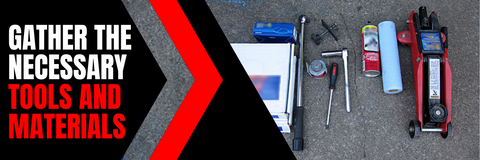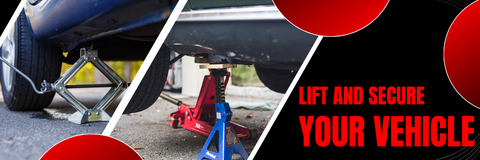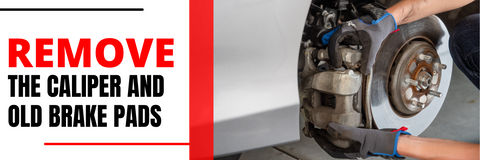A Step-by-Step Guide on How to Change Your Car's Brake Pads
Posted by Hunt Parts on
INTRODUCTION
Your car's braking system is undoubtedly one of its most critical components, ensuring your safety and the safety of others on the road. Over time, brake pads wear down and need replacing to maintain optimal performance. Learning how to change your car's brake pads is a valuable skill that can save you money and ensure your vehicle's safety.
In this comprehensive guide, we'll walk you through the process in six straightforward steps.
- Gather the Necessary Tools and Materials
- Lift and Secure Your Vehicle
- Remove the Caliper and Old Brake Pads
- Inspect and Clean
- Install the New Brake Pads
- Reassemble and Test
Gather the Necessary Tools and Materials

Before diving into the brake pad replacement process, it's essential to gather all the required tools and materials. You'll typically need a lug wrench, a jack, jack stands, a c-clamp or brake caliper tool, a small bungee cord or rope, a socket and ratchet set, and, of course, the replacement brake pads and brake fluid. Make sure you have the right-sized tools for your specific vehicle.
Lift and Secure Your Vehicle

Start by loosening the lug nuts on the wheels but don't remove them just yet. Use a jack to lift your car off the ground, and once it's high enough, place jack stands under the vehicle for added safety. After securing the car on the jack stands, finish removing the lug nuts and take off the wheels. This step provides access to the brake components.
Remove the Caliper and Old Brake Pads

Locate the brake caliper, which is the part that clamps the brake pads onto the rotor. Using a socket and ratchet, carefully remove the bolts securing the caliper in place. Once the caliper is free, use a small bungee cord or rope to suspend it from the suspension components—avoid letting it hang by the brake line, as this could cause damage.
With the caliper out of the way, you can now remove the old brake pads. They should easily slide out from the caliper bracket. Take note of how the pads are positioned, as you'll want to replicate this when installing the new ones.
Inspect and Clean

Before installing the new brake pads, take a moment to inspect the brake components for any signs of wear, damage, or irregularities. If you notice any issues, it's crucial to address them before proceeding. Additionally, clean the caliper and bracket using a brake cleaner to remove any brake dust, dirt, or debris that may have accumulated.
Install the New Brake Pads

Carefully slide the new brake pads into the caliper bracket, ensuring they are positioned correctly. Pay attention to any clips or shims that came with the new pads, as these should be installed as well. Once the pads are in place, use a c-clamp or brake caliper tool to compress the caliper piston back into its housing. This step is necessary to accommodate the thickness of the new brake pads.
Reassemble and Test

With the new brake pads securely in place, reattach the caliper to the caliper bracket using the bolts you removed earlier. Tighten the bolts to the manufacturer's specifications, and double-check that all components are properly secured. Finally, reattach the wheels, hand-tighten the lug nuts, lower the car from the jack stands, and then tighten the lug nuts to the recommended torque specifications.
Before hitting the road, pump the brake pedal a few times to build up brake pressure. This ensures that the brake pads make proper contact with the rotors. Additionally, check the brake fluid level and top it up if necessary.
CONCLUSION
Changing your car's brake pads might seem like a daunting task, but with the right tools, materials, and a systematic approach, it becomes a manageable and rewarding DIY project. Regular brake maintenance is crucial for your safety, and understanding how to change brake pads is a valuable skill that every car owner should possess. By following these six steps, you can confidently tackle brake pad replacement, saving both time and money while ensuring your vehicle's braking system operates at its best.
Share this post
0 comment

